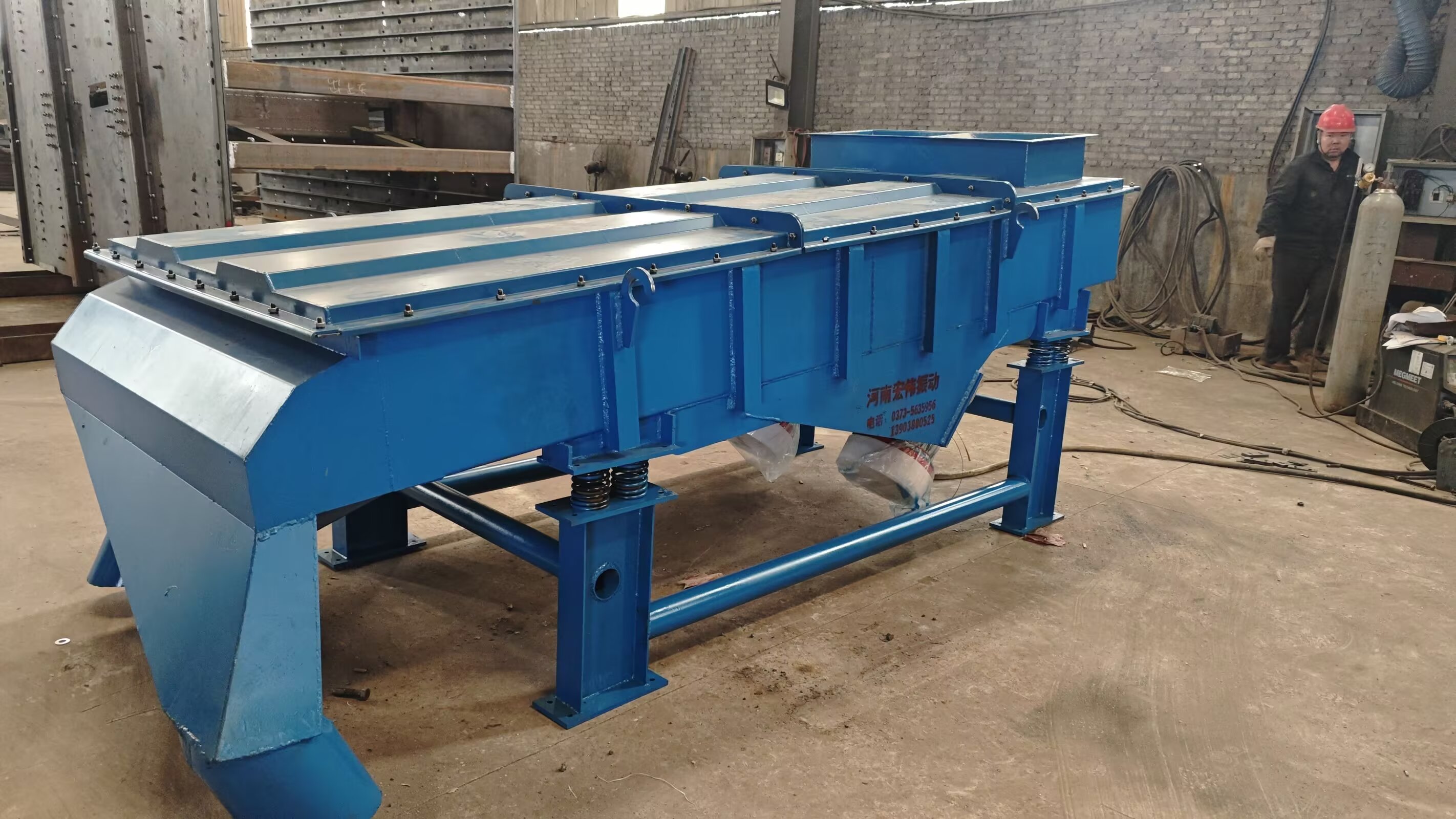The principle and structure of vibrating screen
Feb 21,2025

The working principle of a vibrating screen is to use vibration force to screen materials on the screen, thereby achieving separation of materials according to particle size. The core working principle of a vibrating screen is to use vibration force to screen materials on the screen. When the vibrator starts working, it generates a certain amount of vibration force, which is transmitted to the screen mesh through the screen frame. The material on the screen begins to move relative to the screen surface under the action of vibration force. Materials with smaller particles are more likely to pass through the sieve holes due to the combined effects of gravity, vibration, and friction, while larger particles are left on the sieve surface, ultimately completing the screening process.
The structure of a vibrating screen mainly includes the following parts:
Screening box: The main container for screening materials, usually made of welded steel plates and steel, connected on both sides by seamless steel pipes or steel with flanges.
Sieve: Responsible for separating materials according to predetermined particle size, maintaining tension, and making it easier for materials to move in the direction of vibration.
Vibrator: Usually a vibration motor that generates vibration force through electric motor drive. Common types of vibrators include inertia, elastic connecting rod, electromagnetic, hydraulic or pneumatic.
Bracket: used to support and fix the vibrator and screen box, ensuring the stability of the entire vibrating screen.
Shock absorber spring: allows the entire upper part of the machine to vibrate freely, helping to minimize power consumption, prevent any vibration from being transmitted to the floor, and reduce noise.
Feed inlet: The inlet where materials enter the sieve box, usually designed with a buffer plate to allow the materials to flow evenly into the sieve surface.
Discharge port: The outlet for material discharge, and the size of the discharge port can be designed according to needs. The discharge speed through the valve can be adjusted according to needs.
The classification of vibrating screens mainly includes square vibrating screens and circular vibrating screens. Square vibrating screens are commonly used for screening and grading granular materials, with advantages such as high screening accuracy, large processing capacity, and simple structure. Square vibrating screens are mainly divided into two types: square linear vibrating screens and square swinging screens. Circular vibrating screens are commonly used in industries such as mining, chemical, and building materials to achieve material screening through circular trajectory vibration.
Hot Tags:
PREVIOUS:
NEXT:
Contact Us
E-mail:byunfei2000@gmail.com
Wechat/WhatsApp:+86 17324886663
WhatsApp:+86 18738568071
Address:No. 12 Industrial Road, Zhaipo Town, Xinxiang, Henan Province







